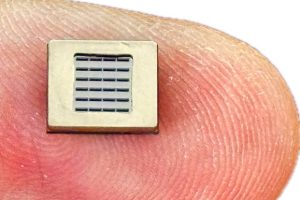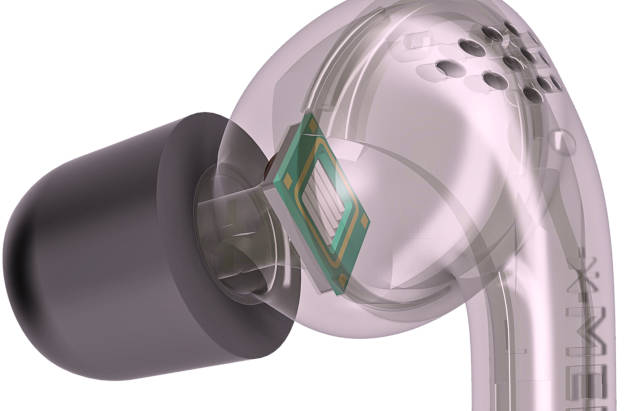
Branded ‘Cypress’, the company describes it as “full-range” and said that it “achieves >140dB low frequency SPL [sound pressure level] enabling a no-compromise replacement for coil speakers in noise-cancelling earbuds”.
In an earbud, there would be three parts: a conventional wireless earbud receiver IC, a custom modulator IC (branded ‘Alta’), and the Cypress mems demodulator/transducer.
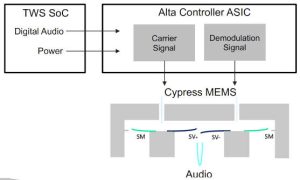
The side-band suppressed carrier is fed to ‘membrane’ actuators within the mems trasducer (‘SM’ in the diagram left) to produces ultrasonic modulated pressure in chamber, said xMems, and the synchronised demodulator signal goes into the ‘valve’ actuators (SV left) which demodulate the ultrasonic pressures to generate audio,” according to xMems.
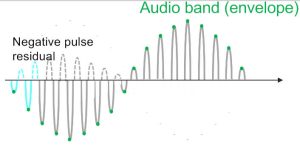
“The sound envelope of ultrasonic pulses is an exact acoustic copy of the source signal,” claimed xMems. It is “40x louder in low frequencies compared to xMems’ prior generation speakers including SPL [sound pressure level] greater than 140dB as low as 20Hz” – the latter is measured with an IEC60318-4 ear simulator. Its “near-constant electrical-to-acoustic group delay can reduce DSP filter complexity which, in turn, leads to shorter DSP latency and power consumption when processing active nose cancellation”.
That 40x claim is compared with the company’s ‘Cowell’ mems speaker, which is not its best existing low frequency performer.
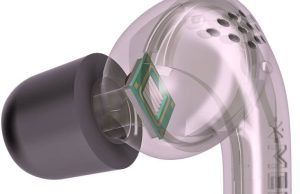
Prototype silicon is now sampling to selected customers now. Production-candidate samples of the mems transducer and companion modulator IC are scheduled for June 2024, then mass production for late-2024.
By appointment, the system will be demonstrated at CES (Las Vegas, 9-12 January).

